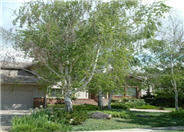
Common name:White Birch, European White Birch
Botanical name:Betula pendula
This medium-size weeping tree will grow to about 40' tall and has a whitish/brown bark with deciduous green leaves.
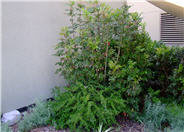
Common name:Oregon Grape
Botanical name:Berberis aquifolium
Exhibiting erect growth, this evergreen shrub grows to a height of 6'. The leaves are 4"-10" long, with 5-9 very spiny-toothed, oval leaflets that are 1.5" in length.
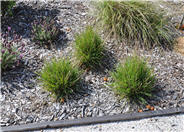
Common name:Blue Moor Grass
Botanical name:Sesleria caerulea
This grass will grow to about 18"-24"tall and 18"-24" wide. It has bluish green or gray green leaves.
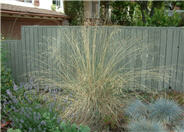
Common name:California Fescue
Botanical name:Festuca californica
The California Fescue is a cool season bunchgrass with blue green blades that reach 2'-5' high and 3' wide. Foliage arches gracefully upwards and outwards. Flower spikes reach 3' above the leaves. Plant in full sun or partial shade. It makes a great companion plant to oak trees and is handsome as a backdrop behind lower growing grasses for a meadow look. The California fescue is native to California and is a beneficial insect plant.
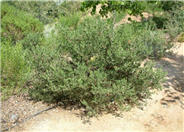
Common name:Sentinel Manzanita
Botanical name:Arctostaphylos densiflora 'Sentinel'
This Manzanita grows 6'-8' high and 5'-8' wide; it has rose/white flowers and is upright. It needs good soil drainage for best performance.
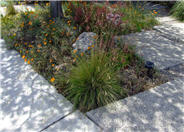
Common name:Mueller's Fescue
Botanical name:Festuca muelleri
This Central European native fescue has shiny, dark green foliage that is slightly bluish green. It is a cool season grass that grows up to 8 inches tall and equally wide. If massed together it can become a lawn alternative.
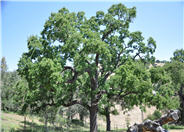
Common name:Valley Oak, White Oak, Roble
Botanical name:Quercus lobata
The Valley Oak is a large deciduous tree that grows 60'-80' tall. It develops a rounded canopy that spreads 50'-70' wide with leaves deeply lobed and rounded. The Valley Oak is very heat tolerant and drought tolerant. It is a native to California and attracts butterflies.
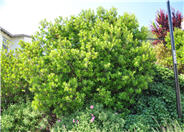
Common name:Pacific Wax Myrtle
Botanical name:Myrica californica
This large shrub/tree can reach 30' tall and has glossy, dark green leaves with purple nutlets that attract birds. It is used very effectively as a screen.
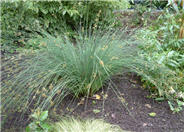
Common name:California Gray Rush
Botanical name:Juncus patens
Although a wetland plant, Juncus patens can tolerate fairly dry conditions. It will slowly clump to 2'-3' wide and a height of 2'-2.5'. There are many selections of this species available with different heights and widths. It is carefree, with little to no maintenance. It provides great upright structure to many styles of landscapes.
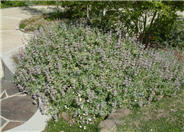
Common name:Point Sal Spreader Sage
Botanical name:Salvia leucophylla 'Point Sal Spreader'
The Point Sal Spreader Sage is an evergreen shrub that grows 3'-4' tall and 4'-6' wide. It has gray green to white leaves. Flowers are pinkish purple. This shrub tolerates heat and droughts. This Salvia is a California native. This variety has a more prostrate form than other varieties.
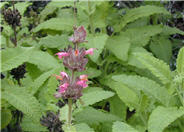
Common name:Hummingbird Sage, Pitcher Sage
Botanical name:Salvia spathacea
The extravagant leaves of this small clumping sage emit a perfectly sweet fragrance, which attracts hummingbirds. In the spring, the reddish pink flowering spikes become a deep fuchsia. It is a great plant for dry shade.
Solving Runoff Problems
Importance of Watershed
A watershed is a land area that drains rain and other water into a creek, river, lake, wetland, or groundwater aquifer. Water from your neighborhood also enters the watershed through the storm drain system and flows directly to local creeks without any treatment. It often is contaminated by pollutants that can be toxic to fish, wildlife, and people.Click in the green box for more information
| Designer: Joshua Carmichael | Dappled Shade Hillside |
Photographer: GardenSoft |
Soils and Compost:
Practice grass-cycling by leaving short grass clippings on lawns after mowing, so that nutrients and organic matter are returned to the soil.
Integrated Pest Management:
Attract, or buy beneficial insects such as ladybugs and lacewings to control pest outbreaks in your garden.

